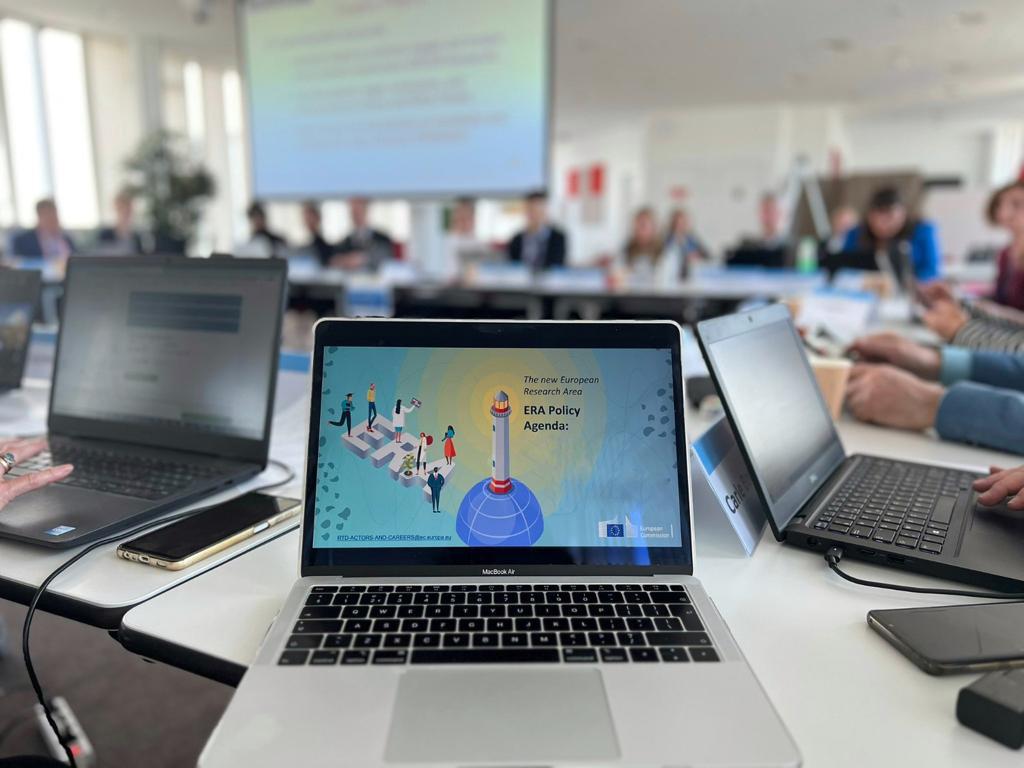A European Excellence Initiative (EEI) is in the making, in the context of ERA Action 13 (Empowering Higher Education Institutions) of the ERA Policy Agenda. The European university sector, together with representatives from Member States (MS), is working closely with EU policymakers to develop the outline of such initiative, whose goal is to boost Europe’s competitiveness in science globally.
If designed in the right way, the EEI could become the spearhead of European research collaboration. For this to happen, the EEI should not duplicate existing approaches, or fragment funding in too many directions. On the contrary, it should consider existing national or European approaches to excellence (such as the ERC Synergy Grants or the EIC pathfinder) to introduce the aspects that are currently lacking in European research collaboration.
In view of the 23 June meeting on ERA Action 13, YERUN shares some reflections regarding the ongoing process towards a future European Excellence Initiative. This contribution draws from the discussions with YERUN members, in the context of the YERUN Policy Platform, of existing national initiatives for excellence, as well as of the current opportunities coming from the EU. This reflection aims to identify where the added value of such an Initiative lays, looking at what it could bring to the European university sector and how it could help research excellence thrive across Europe in an inclusive and sustainable way.
Click here to download the YERUN paper!
The European Excellence Initiative should seek fostering future excellence research in Europe instead of giving prizes to “excellent” institutions
Silvia Gomez Recio, YERUN Secretary General
The European Excellence Initiative should aim to raise and promote (not reward) excellence across Europe.
- The EEI should strive to be forward looking and give the possibility to new excellent research to flourish across Europe, by supporting new collaborations that would otherwise not exist without the European support.
- For the same reason, the EEI should not be intended as a top-up for institutions and/or projects already funded through other funds. A top-up to champion institutions already awarded would further deepen the gap between universities. A top-up to consortia that have already been awarded via Horizon Europe funding would mean missing the opportunity to explore new venues for excellence to flourish in Europe.
The future EEI should be opened to any consortia beyond the European Universities Alliances, beyond Widening countries and involve other research performing organisations.
- The EEI should be based on competition and therefore be open to any consortia interested in applying.
- In the optic of raising excellence as the goal, the EEI should be open to all universities, regardless of the country they are located in. Among other reasons, the Widening approach does not consider institutions that are in less developed regions belonging to non-widening countries, which would benefit from being part of this initiative.
- Moreover, while a strong lead from universities in these consortia is to be encouraged, the participation of other research performing organisations should be welcome too, given that this would enrich the research collaboration itself by means of new perspectives, research approaches and infrastructures.
- This initiative should give the opportunity to have excellence emerge wherever it is to be found, and to give freedom to different partners to come together without being prescriptive about the geographical implications of the consortia.
The EEI would bring added value by promoting collaborative bottom-up, fundamental research.
- The limited opportunities for bottom-up fundamental research are a drawback of the current framework programme for research and innovation, as well as a shortcoming of the current ERA policy agenda and its action (see YERUN’s Position on Horizon Europe’s consultation and YERUN’s ERA gaps analysis).
- The EEI could be a tool to fill this gap and provide a unique opportunity for excellent bottom-up, blue-sky research to thrive by capitalizing on the different ideas, experiences, and cultures that European collaboration can offer.
- The EEI should empower teams of researchers in identifying and tackling themselves the challenges or topics to explore and solve.
- The grant should remain with the department/ research centre/ institution, to allow excellence to remain and grow there regardless of researchers’ mobilities or leadership changes.
The EEI should learn from national excellence initiatives: be ambitious, but also simple and inspiring.
- National excellence initiatives have the merit to increase transparency around university funding and to capture what constitutes “research excellence”. Often, they provide a steppingstone for universities to access extra funding and to gain visibility nationally and internationally.
- On the other hand, Excellence initiatives risk polarizing the higher education sector when they further boost institutions that are already excellent over those that might use extra support. Furthermore, due to the fierce competition of Excellence schemes, a large amount of human resources is invested during long and complex application processes – an investment that is often found to provide no return.
- It is important that a future EEI draws from these lessons and does not replicate the negative effects registered by those engaged in national excellence initiatives. This means that, while keeping the ambitions high, the scheme should entail a simple application process, that can encourage the participation of smaller institutions who want to increase their research performance.
Conclusions
YERUN welcomes the efforts by the ERA Forum to promote research excellence, and calls policymakers to design this initiative keeping inclusiveness and sustainability in mind. A university that is “excellent” in everything does not exist. Rather, there are areas or disciplines where a university can be excellent. The added value of a EEI lies in connecting these together, by creating the fruitful conditions for excellence to thrive in an international collaborative environment.
If the resources invested in the future European Excellence Initiative are not ready to match the expectations, Europe will fail to achieve its ambitions in research and innovation. Europe is a source of creativity and innovation, but when the numbers do not match, there is not much we can do.
Silvia Gomez Recio, YERUN Secretary General










